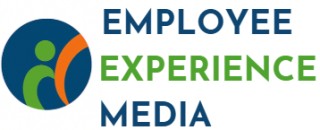Understanding the Role of an HR Calendar
Harnessing the Benefits of Organized Events
An HR calendar acts as a powerful tool in cultivating a healthy and engaging work environment. By strategically organizing key dates and spanning the entire year, it fosters timely celebration of events that matter to employees, from Memorial Day ceremonies in May to festivities marking Black History Month in February.
Incorporating special days like Pride Month in June or even International Day observances, such as International Day of Happiness in March, helps in addressing diversity and inclusion actively. Moreover, a well-structured HR calendar highlights employee engagement events throughout the year, sparking enthusiasm among employees and embedding a stronger sense of community at work.
While you're planning the year ahead, including diverse celebrations in your HR schedule helps acknowledge various cultural and national holidays. This not only respects employees' backgrounds but also solidifies their sense of belonging, enhancing overall employee engagement.
However, there's more to an HR calendar than just marking celebrations. Incorporating sessions for mental health awareness, celebrated through dedicated months like Mental Health Awareness Month in May, shows that an organization values the well-being of its workforce. Additionally, September’s Suicide Prevention Day can be an appropriate time to integrate critical awareness campaigns, driving forward the message on mental health importance.
Whether it’s bringing attention to employee recognition days like Employee Appreciation Day or aligning workplace wellness initiatives throughout the year, the HR calendar serves as a strategic roadmap for maintaining organizational rhythm and boosting employee morale. Understanding its dynamics fuels effective planning and successful execution. For more insights into the foundational dynamics influencing such systems, exploring
behavioral dynamics might offer valuable perspectives.
Key Elements to Include in Your HR Calendar
Essential Components for a Comprehensive HR Calendar
Developing an effective HR calendar involves more than just listing routine HR events and activities. It extends to incorporating key dates and engagement ideas that resonate with employees, fostering an inclusive and supportive work environment. Below are some crucial elements every HR calendar should include:
- Holidays and National Observances: Mark significant holidays like Memorial Day, Pride Month, and Black History Month. Acknowledge days of work flexibility, such as remote working opportunities around specific national days.
- Employee Engagement Events: Plan activities aimed at boosting employee engagement throughout the year. For example, organize events linked to specific months such as Black History Month in February or Pride Month in June.
- Mental Health Awareness: Dedicate specific times in the calendar to celebrate and promote mental health awareness, possibly during Mental Health Awareness Day in October or similar international days.
- Monthly Health and Wellness Activities: Encourage health-related events that coincide with specific days, such as a mental health initiative in January or a company-sponsored wellness day in July.
- Training and Development Sessions: Schedule training workshops and seminars. Align these with less busy periods to maximize attendance, perhaps after busy seasons like the tax return deadline in April.
- Cultural and Heritage Months: Highlight cultural months such as Black History Month in February, and recognize the contributions of various groups, fostering a culture of diversity.
- Legislative Compliance Dates: Include reminders for essential compliance deadlines like the annual filing of tax returns or any changes in labor laws, to ensure organizational alignment with legal requirements.
A well-structured HR calendar not only underscores the organization’s commitment to employee well-being but also enhances the sense of belonging. For insights into harnessing these calendars for boosting employee experiences, check out
navigating the future of IT services. This ensures alignment with emerging trends and challenges organizations face today. By integrating these elements thoughtfully, organizations can create a calendar that supports employee satisfaction and engagement year-round.
Aligning the HR Calendar with Employee Experience Goals
Coordinating HR Strategies with Employee Experience Objectives
Creating an HR calendar that directly speaks to employee experience objectives is a strategic process that contributes immensely to employee engagement and satisfaction throughout the year. By meticulously aligning the HR calendar with these goals, companies can boost morale and foster a healthier workplace environment. Here's how to approach it:
- Focus on Key Dates and Events: Start by highlighting significant events such as health and mental health awareness days, holidays, and employee appreciation initiatives. For example, International Day for Mental Health in October or Pride Month in June can be excellent opportunities to promote inclusivity and mental wellness.
- Incorporate Employee Engagement Initiatives: Schedule regular activities in your calendar to maintain high levels of employee engagement. From celebrating Employee Appreciation Day in March, memorializing important historical events during Black History Month in February, to hosting wellness workshops in April or June, these initiatives play a pivotal role in maintaining high levels of employee morale.
- Plan Around National and Cultural Events: Recognizing and celebrating national holidays and cultural events not only respects diversity but also enhances collective employee spirit. Include days like Memorial Day, Black History Month, or various heritage months in your calendar to demonstrate inclusivity.
- Account for Cyclical Work Periods: Structuring your HR calendar to accommodate tax returns or peak work seasons with planned breaks or flexible working days is essential. This ensures that employees remain productive without burnout.
- Designation of Downtime: Allocate time in less busy months for employees to take vacation, such as in August or January, enabling them to recharge and return to work rejuvenated.
- Include Predictable Engagement Activities: Events like "Friday July" barbecues or mental health days scheduled intentionally throughout the year can notably enhance employee connectivity and morale.
Integrating these aspects into your HR strategy will ensure that the calendar does not only serve as a strategic tool but also as a roadmap for enhancing employee experience year-round. To better address any challenges faced when aligning HR calendars with employee experience goals, consider
navigating the challenges of remote work and ensure your HR calendar supports both in-office and work-from-home employees.
Leveraging Technology for HR Calendar Management
Integrating Digital Tools for Seamless Management
When it comes to managing an HR calendar effectively, leveraging technology is not just an option—it's a necessity. With the advancement of digital tools, keeping track of important events, deadlines, and employee-related activities becomes significantly more streamlined and efficient. Here's how technology can transform your HR calendar management:
- Automated Reminders and Notifications: Implement systems that automatically remind employees of key dates and events, such as memorial day, international day, and heritage months like Pride Month or Black History Month. This ensures that nothing slips through the cracks, and everyone is kept in the loop.
- Centralized Data Management: Digital platforms allow for efficient storage and retrieval of important information. This is particularly useful for marking occasions like day April or day July, as well as planning around major periods such as the mental health awareness month.
- Health and employee engagement can be enhanced by celebrating national and international holidays like day February, day September, and employee appreciation days, leading to increased morale and reduced burnout.
- Customizable Calendar Features: Platforms that offer customizable calendar features can adapt to the unique needs of your organization, helping you plan events that promote employee engagement, such as organizing activities for mental health awareness day, or celebrating less traditional holidays that may resonate with your workforce.
- Efficient Tracking and Reporting: HR calendars powered by technology can provide insights into employee engagement and participation rates during events, allowing for a better assessment of what works and what doesn’t. This will enable HR to adjust strategies over time.
Labor-intensive tasks, like managing time-consuming activities during tax return periods or organizing events for less-acknowledged holidays, become easier with the right tech solutions. As mechanisms for tracking and automating processes improve, there will be less manual overhead, allowing HR teams to focus on the true goal: enhancing employee experience and fostering a more engaged workplace environment throughout the year.
In conclusion, by embracing technological advancements, HR can ensure that employees feel valued and involved, ultimately creating a cohesive work culture where every day counts, whether it’s Friday July or day August.
Case Studies: Successful HR Calendars in Action
Real-world Examples of Effective HR Calendars
A perfectly designed HR calendar isn't just theoretical; it's a practical tool that drives outcomes in real-world settings. Organizations which have effectively utilized HR calendars demonstrate how this approach can lead to enhanced employee experience and engagement.
Consider one organization that successfully aligned its HR activities with national holidays and awareness days throughout the year, such as Black History Month in February, International Day of Happiness in March, and Pride Month in June. By doing this, the organization cultivated an inclusive environment, celebrating every unique day. For example, Mental Health Awareness Day in October was utilized to introduce health-centric events, highlighting mental health as a priority.
Another organization leveraged a detailed HR calendar to manage employee engagement initiatives. One successful campaign was centered around Heritage Month in September, when they launched engagement ideas focused on the diverse backgrounds of its employees. Events like memorial day and team-building activities on the day of national importance, such as Independence Day in July, were part of their calendar. This comprehensive approach not only increased employee engagement but also enhanced their sense of belonging and inclusion.
In different case studies, integrating key dates like tax return deadlines and important work periods such as the peak sales days in December showed proactive planning. By scheduling around high-demand periods, these organizations effectively reduced employee stress, thus improving overall employee engagement and productivity.
These examples illustrate how a well-structured HR calendar, filled with key dates and thoughtful events throughout the month, can boost employee satisfaction and contribute significantly to company culture. Aspen Strategies highlighted that consistent celebration of small wins and recognition of every day, like a simple Friday in July, plays a crucial role in maintaining enthusiasm. Yet, challenges such as balancing day-to-day operations with scheduled events can arise, requiring adaptable solutions to maintain this balance throughout the year.
Common Challenges and Solutions in HR Calendar Implementation
Addressing the Hurdles of Implementing an HR Calendar
Implementing a comprehensive HR calendar presents its own set of challenges. Despite its potential to significantly enhance employee experience and engagement, there are several obstacles organizations must overcome to make it effective.
Keeping Up with Key Dates and Events
One of the main challenges is ensuring that the calendar is complete and up-to-date with key dates, such as national holidays or important observance days. Missing crucial dates like International Day of Happiness in March or Memorial Day in May could lead to decreased employee engagement. Regularly updating the calendar to include events such as Heritage Month celebrations or Mental Health Awareness in October requires diligence.
Ensuring Inclusivity and Diversity
Creating a calendar that recognizes and celebrates the diversity of your workforce is vital. Incorporating events like Black History Month in February or Pride Month in June can help in fostering an inclusive environment. However, organizations often face challenges in identifying which celebrations are most relevant to their employees, requiring constant feedback and open lines of communication.
Technology and Change Management
Adopting a technology platform to manage the HR calendar efficiently is advantageous, but it might meet resistance from employees accustomed to traditional methods. Educating the workforce and demonstrating the benefits, such as increased visibility of events and streamlined reminders, can ease this transition. Consider leveraging platforms that integrate with your existing systems, ensuring a seamless flow of information and reducing redundancy.
Balancing Business and Personal Commitments
Another challenge lies in scheduling events that don't clash with employee workloads. Ensuring that important dates such as tax return filing or major project deadlines don't overshadow employee engagement initiatives like Mental Health Day in April or Employee Appreciation Week can be tricky. Striking a balance between professional commitments and personal wellbeing should be at the forefront when planning the calendar experiences.
Resource Allocation and Engagement Ideas
Organizations often encounter hurdles in resource allocation for organizing and promoting events. Creative engagement ideas, like wellness activities for Mental Health Day or cultural events during Heritage Months, require not just financial but also human resources. Collaboration across departments can ease the pressure on HR, enabling successful execution.
By anticipating these challenges and developing strategic solutions, organizations can harness the power of an HR calendar to significantly improve employee engagement and wellbeing throughout the year.














